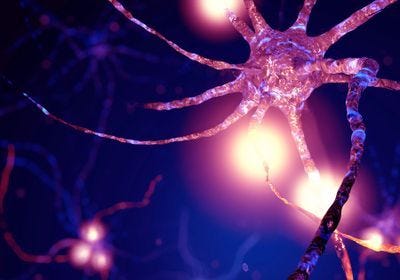Which adaptation causes quick improvements in performance?
The question of muscle vs. nervous system.
Take a de-conditioned individual and put them on a daily training program, including nutrition and recovery strategies. Will you see rapid improvement and gains? The answer is yes. A novice weightlifter starts training with a good professional coach 4 times a week. Rapid progress? Most likely, yes. What is causing these initial jumps in performance. Rapid muscle growth due to stressors, or nervous system adaptations? Let’s take a look.
The nervous system and muscle tissue are two critical components of the human body that work together to facilitate movement and bodily functions. However, when it comes to adaptation, the nervous system has been found to adapt much faster than muscle tissue.
The nervous system is responsible for sending and receiving signals from the brain to various parts of the body, allowing for coordinated movement and bodily functions. It consists of the central nervous system (the brain and spinal cord) and the peripheral nervous system (the nerves and ganglia outside of the central nervous system). The nervous system can quickly adapt to changes in the body, such as learning new movements or adjusting to changes in the environment. This adaptability is due to the plasticity of the nervous system, which allows it to reorganize and change its structure and function in response to different stimuli.
On the other hand, muscle tissue, which is responsible for generating force and facilitating movement, has been found to adapt much more slowly than the nervous system. Muscle tissue adapts primarily through a process called hypertrophy, where the size and strength of the muscle fibers increase in response to resistance training or physical activity. However, this process of adaptation takes time and consistent effort, as the muscle fibers need to undergo structural changes to become stronger and more resilient.
The reason for the faster adaptation of the nervous system compared to muscle tissue lies in the differences in their cellular structure and function. The nerve cells in the nervous system, also known as neurons, have the ability to quickly form new connections and pathways in response to stimuli, allowing for rapid adaptation and learning. In contrast, the muscle fibers in the muscle tissue have a more complex structure and slower rate of growth and adaptation.
The nervous system plays a crucial role in facilitating muscle adaptation. When a movement is learned or repeated, the nervous system becomes more efficient at coordinating the muscle contractions required for that movement. This phenomenon, known as motor learning, is facilitated by the nervous system's ability to quickly adapt and refine motor patterns, leading to improvements in muscle coordination and performance.
In conclusion, the nervous system's ability to adapt much faster than muscle tissue is a result of its plasticity and ability to quickly reorganize in response to different stimuli. While muscle tissue can also adapt and grow stronger over time, it does so at a slower rate compared to the rapid adaptability of the nervous system. Understanding these differences in adaptation can help in designing more effective training and rehabilitation programs for all situations.
Stay gold.



